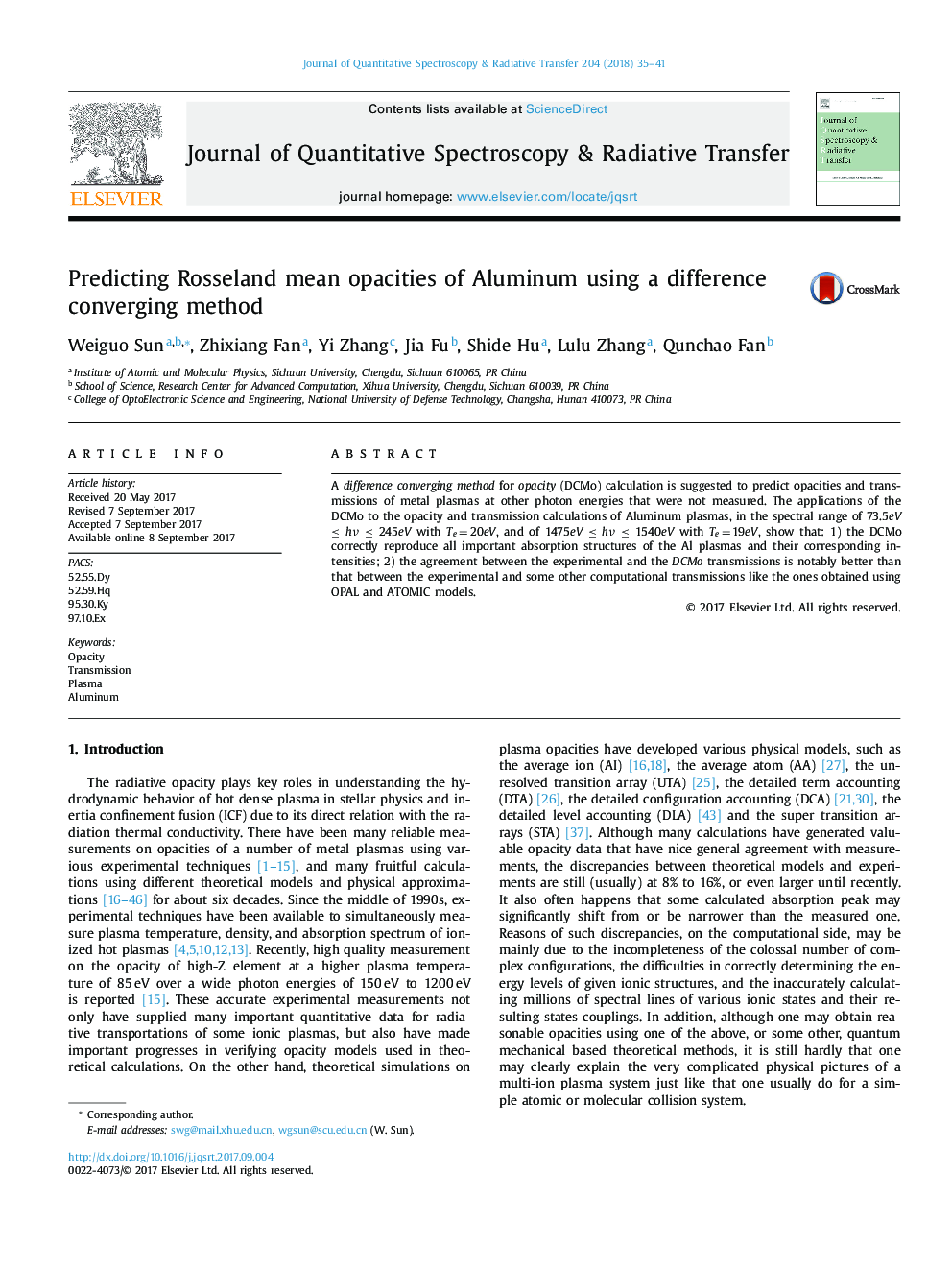| Article ID | Journal | Published Year | Pages | File Type |
|---|---|---|---|---|
| 5426987 | Journal of Quantitative Spectroscopy and Radiative Transfer | 2018 | 7 Pages |
â¢The Rosseland mean opacities based on three experimental conditions in Aluminum plasma have been calculated.â¢A difference converging method has been used to predict Rosseland mean opacities which reproduce all important absorption structures of the Aluminum plasmas.â¢Wavelengths of 2pâ¯ââ¯3s transitions in Aluminum ions are obtained.
A difference converging method for opacity (DCMo) calculation is suggested to predict opacities and transmissions of metal plasmas at other photon energies that were not measured. The applications of the DCMo to the opacity and transmission calculations of Aluminum plasmas, in the spectral range of 73.5eV ⤠hν ⤠245eV with Teâ¯=â¯20eV, and of 1475eV ⤠hν ⤠1540eV with Teâ¯=â¯19eV, show that: 1) the DCMo correctly reproduce all important absorption structures of the Al plasmas and their corresponding intensities; 2) the agreement between the experimental and the DCMo transmissions is notably better than that between the experimental and some other computational transmissions like the ones obtained using OPAL and ATOMIC models.
